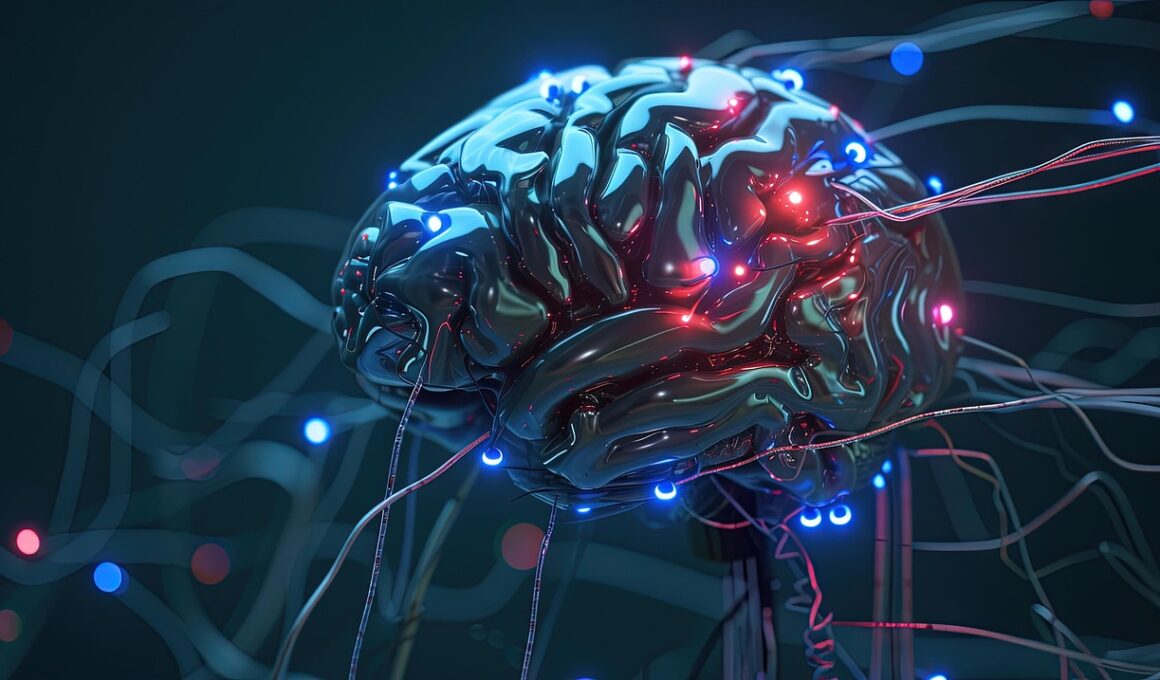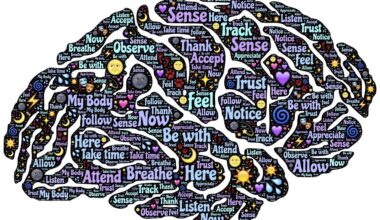Integrating Machine Learning in Training Load Analysis
Training load monitoring has become an essential aspect of sports analytics. Understanding how to quantify and assess training load can greatly impact an athlete’s performance. Traditionally, training load has been analyzed using subjective measures, such as perceived exertion. However, this method has limitations and can be biased, leading to inconsistent results. Integrating machine learning into training load analysis offers a more precise and data-driven approach. Machine learning algorithms can process large datasets efficiently, identifying patterns that may not be visible through conventional methods. This technology can provide objective insights into how athletes respond to training stimuli over time. Analyzing data from heart rate monitors, GPS units, and biomechanical sensors can reveal critical information about an athlete’s readiness. Rather than relying solely on one type of measurement, machine learning combines multiple data sources to create a comprehensive picture. This multidimensional approach enables coaches and trainers to personalize training regimens, minimize injury risks, and optimize performance. Overall, the integration of machine learning into training load monitoring represents a significant advancement in sports analytics, ushering in a new era of data-informed athlete management.
The role of machine learning in training load analysis extends to predictive modeling. By examining athletes’ historical data, machine learning can forecast future performance outcomes based on various training loads. This predictive capability is particularly useful when planning individualized training schedules. Coaches can use these insights to make informed decisions about increasing workloads, ultimately maximizing training effectiveness while minimizing fatigue and injury risks. Advanced algorithms can assess different variables, such as training intensity, duration, and recovery periods. These factors are crucial in maintaining optimal performance levels without overtraining. Machine learning models can adapt continuously as new data becomes available, ensuring that predictions remain relevant. Additionally, insights derived from these analyses can help teams make informed strategic decisions during competitions. Understanding how players’ training loads affect their in-game performance can guide coaching strategies, substitution patterns, and recovery protocols. Furthermore, collaboration between data scientists and sports professionals is vital in ensuring that machine learning applications align with practical coaching needs. Ultimately, the fusion of machine learning with training load analysis can transform the landscape of athlete training by enhancing performance and prolonging athletic careers.
The advantages of using machine learning for training load monitoring are numerous and can be categorized into several key areas. First, the accuracy of data interpretation increases with machine learning. Traditional analytical techniques can create a subjective bias, potentially skewing results. However, algorithms eliminate this bias by relying entirely on the data presented. As a result, stakeholders, including athletes, coaches, and sports scientists, can trust the findings. Second, machine learning enhances the speed of analysis. In a sport environment where fast decision-making is crucial, machine learning algorithms can swiftly process vast amounts of information and present actionable insights. Third, machine learning facilitates personalized training plans by accounting for individual differences in response to training loads. By analyzing each athlete’s physiological data, coaches can tailor interventions to enhance performance. The opportunity for continuous learning is another significant advantage, as algorithms improve with new data. This adaptability is crucial in the ever-evolving landscape of sports science. Finally, the integration of machine learning allows for better recovery strategies, as data can inform when athletes need a break or a change in their training routine, significantly reducing the risk of injury.
Challenges and Limitations of Machine Learning in Sports
Despite the clear benefits of machine learning in training load monitoring, challenges persist. One primary concern is the quality of data. Machine learning algorithms require high-quality, consistent data for accurate predictions. In sports, data collection can be inconsistent, influenced by factors like equipment reliability or athlete compliance. Ensuring that the data collection processes are standardized is essential for effective analysis. Another challenge is the complexity of machine learning algorithms, which can sometimes hinder their understanding among sports professionals. Coaches and trainers may not have the technical training to interpret these models, creating a disconnect between data insights and practical applications. Moreover, reliance on machine learning may lead to overconfidence in technology, potentially sidelining the importance of human intuition and experience. Training load analysis should remain a collaborative process, involving data scientists and sports practitioners. Furthermore, ethical considerations arise, particularly with respect to athletes’ privacy. Ensuring that athletes’ data is used responsibly while complying with legal regulations is essential for fostering trust in machine learning applications. Addressing these challenges is crucial for realizing the full potential of machine learning in sports analytics, particularly in training load monitoring.
Implementing machine learning in training load monitoring requires collaboration between various stakeholders. Involving data scientists, coaches, sports scientists, and athletes is essential to develop effective systems that meet everyone’s needs. This multidisciplinary approach bridges the gap between technical knowledge and practical application. Regular training and workshops are vital to educate coaches and sports professionals about how to interpret machine learning insights. Additionally, athlete feedback is invaluable; understanding their perceptions of workload and recovery can enhance the development of data-driven methods. Establishing a feedback loop encourages continuous improvement of the training load monitoring process. Organizations must also invest in technology and infrastructure to support data collection and analysis. The integration of wearable technologies, for instance, can provide real-time data on athletes’ performance. Proper league regulations can ensure that all stakeholders adhere to guidelines concerning data usage. With the right systems in place, the potential for machine learning in training load analysis is immense. This progressive attitude towards athlete management can lead to enhanced performance outcomes. The ultimate goal should be the holistic development of athletes, balancing training, recovery, and performance. Increased collaboration and investment will contribute to a more data-informed future.
Future Directions for Machine Learning in Training
The future of machine learning in training load monitoring is promising, with potential applications only beginning to be uncovered. As technology advances, the accessibility of data will increase significantly, allowing for more extensive datasets and improved model accuracy. Functional improvements in machine learning algorithms will also enhance analysis capabilities, making them more user-friendly for coaches and trainers. Moreover, the integration of real-time analytics into training sessions will become more prevalent. This evolution will enable immediate adjustments to training loads based on physiological responses, improving athlete performance and reducing injury risk. Continuous advancements in sensor technology will also play a critical role, as benefits arise from devices that accurately capture athlete movements with minimal interference. The field of biomechanics, in tandem with machine learning, can provide motion analysis and feedback, optimizing training methods even further. Furthermore, collaborations between sports organizations, technology companies, and academic institutions will drive innovation and ensure that developments align with athlete and coach needs. Ultimately, the use of machine learning in training load analysis can lead to a more personalized approach that enhances the growth and longevity of athletic careers.
In summary, the integration of machine learning in training load monitoring highlights a transformative shift in sports analytics. As coaches and athletes begin to embrace this technology, the potential for improved performance becomes increasingly apparent. By utilizing accurate data-driven insights, coaches can optimize training regimens while safeguarding athlete well-being. However, understanding the importance of collaboration is crucial; data alone cannot dictate training decisions without human interpretation and expertise. The advantages of machine learning, including its predictive capabilities, efficiency, and adaptability, point towards a future defined by continuous improvement. As organizations navigate the complexities of data collection and analysis, they must remain vigilant about ethical considerations and athlete privacy. The balance between technology and the personal experience of athletes will ultimately define success in this advanced analytical age. Trends indicate that sports teams and organizations that embrace innovation will gain a competitive edge. Therefore, investing in machine learning presents an opportunity not only to enhance athlete performance but also to elevate the entire scientific approach to sports training. The fusion of technology and human intuition will chart unknown territories in maximizing athletic potential.
In conclusion, the landscape of sports analytics, particularly in training load monitoring, is changing rapidly due to the incorporation of machine learning technologies. This evolution promises to bring about more accurate, personalized, and effective training regimens for athletes across various sports. By focusing on data-driven coaching strategies, stakeholders can significantly enhance athlete performance, reduce the risk of injuries, and increase overall satisfaction with training processes. Collaboration remains paramount in bridging the gap between technology and practical applications. Continuing education for coaches, trainers, and scientists will be essential to maintain a competitive edge in this dynamic field. Moving forward, the challenges and limitations associated with machine learning must be addressed to unlock its full potential. Ethical practices in data management and the integration of comprehensive feedback mechanisms will support the effectiveness of these technologies. The future is bright for training load analysis that utilizes machine learning, as the synergistic effect of combining innovative technology with established sports science principles can lead to groundbreaking advancements. Embracing this technology while retaining a strong emphasis on human expertise will undoubtedly foster a transformative era for athletes and coaches alike.


